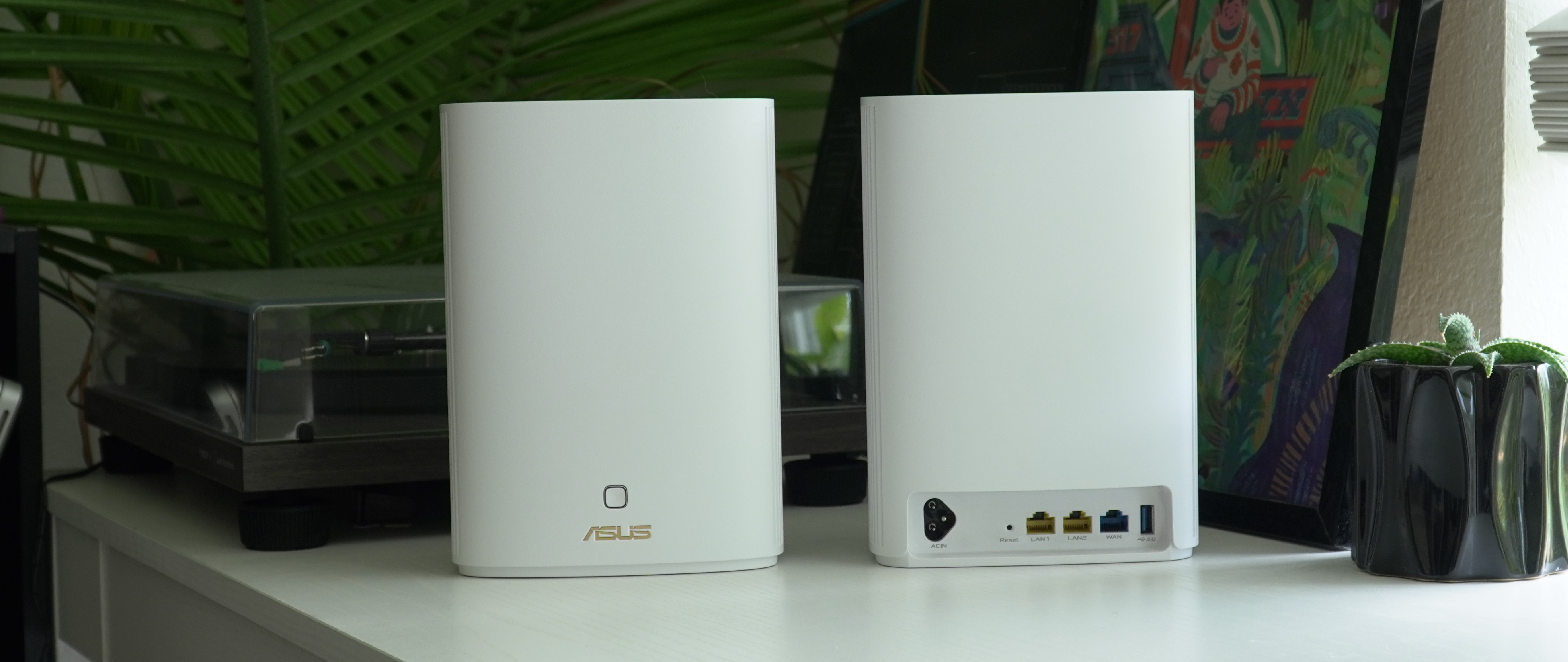Android Central Verdict
The ZenWiFi AX Hybrid XP4 is a solid mesh system that can deliver more than enough speed for most families. Its powerline backhaul enables a reliable connection even through thick walls. The only problem is that for most people, the powerline connection isn't strong enough in many homes and can result in instability.
Pros
- +
Solid AX1800 performance
- +
Easy setup
- +
User-selectable backhaul
- +
AiMesh lets it work with other ASUS routers
- +
AiProtection and parental controls are free
Cons
- -
Hard to predict power line performance
- -
Inconsistent performance on auto backhaul
- -
Expensive
- -
No right angle plugs
Why you can trust Android Central
The ASUS ZenWiFi AX Hybrid XP4 is a mesh Wi-Fi system that uses broad strokes to solve a very specific issue. At its core, it’s an AX1800 dual-band Wi-Fi 6 mesh system but it includes a power line backhaul option. There are a ton of imaginable applications for this mesh tech but for most people, the power line option is going to be not only the slowest but the least predictable backhaul. Even so, the software ASUS packs in works well and the hardware remained reliable through hours of experimentation.
Power line tech is nothing new but it has continued to advance and the AV1300 connection available on this kit can deliver up to 1,300Mbps if conditions allow. The problem is that they rarely do and in my case, I never even saw half of that. Power line adapters rely on the quality of your home’s wiring to create a stable connection and can be affected by interference from other appliances on the line such as HVAC systems. While it took some time to get it set up just right, the ZenWiFi AX Hybrid is a mesh system I could see myself using full time.
ZenWiFi AX Hybrid review: Price and availability
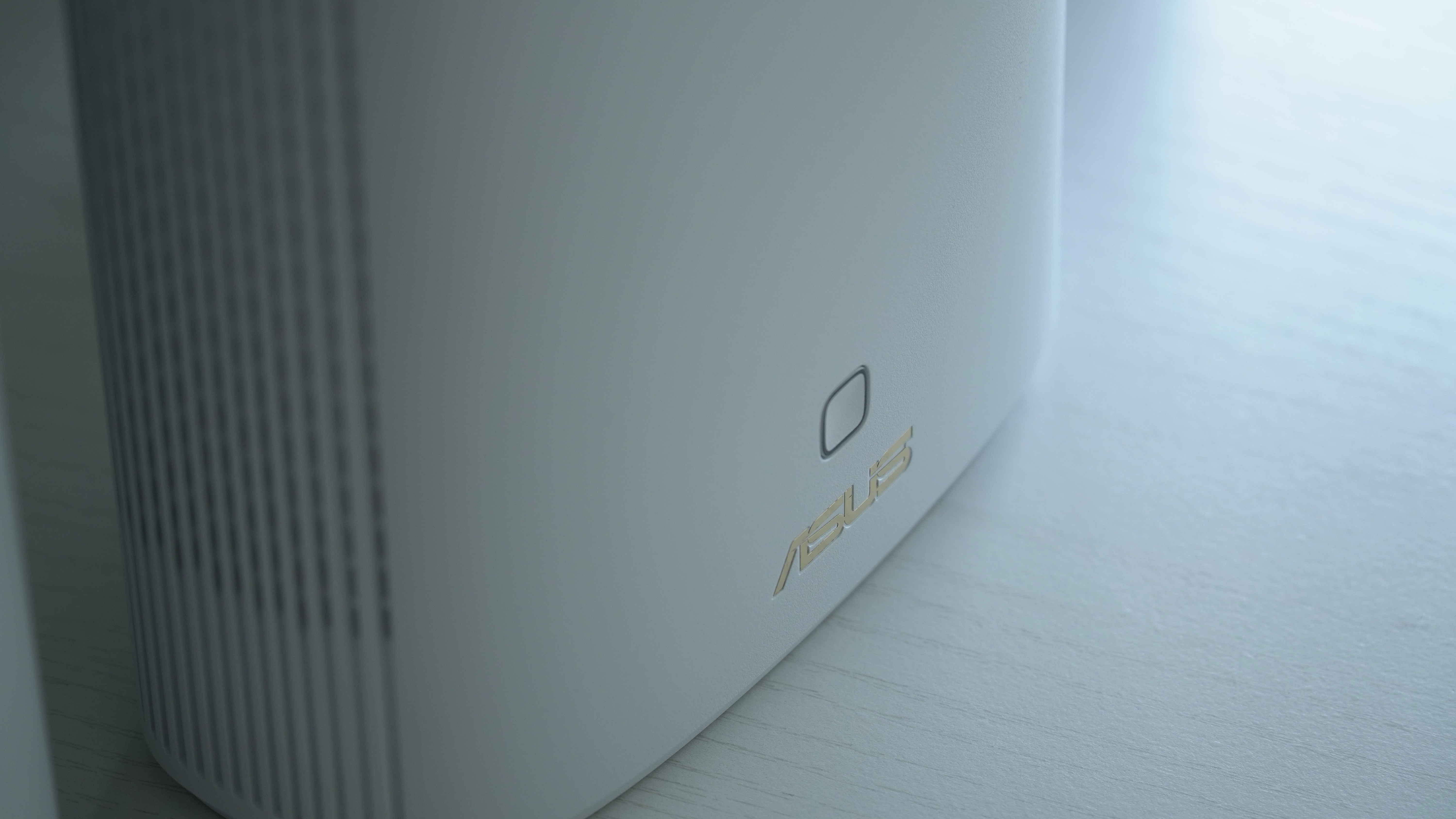
This mesh kit is pricey with a suggested retail price of $329.99 but it's worth keeping in mind that compared to other wired backhaul options, the ZenWiFi AX Hybrid is a solid value, especially considering its simplicity. The nodes cover up to 2,750 sq. ft. each with the two in the kit covering up to 5,500 sq. ft. depending on how you have your system deployed. The packaging is reasonably minimal with mostly cardboard packing materials.
In the box, you get both nodes, two three-prong power cables, and an ethernet cable. There’s a piece of foam that needs to be detached from the top portion of the box for recycling but as a whole, not bad. From a sustainability perspective, it’s nice to see electronics manufacturers leaning into renewable and recyclable packing materials.
ZenWiFi AX Hybrid review: What I like
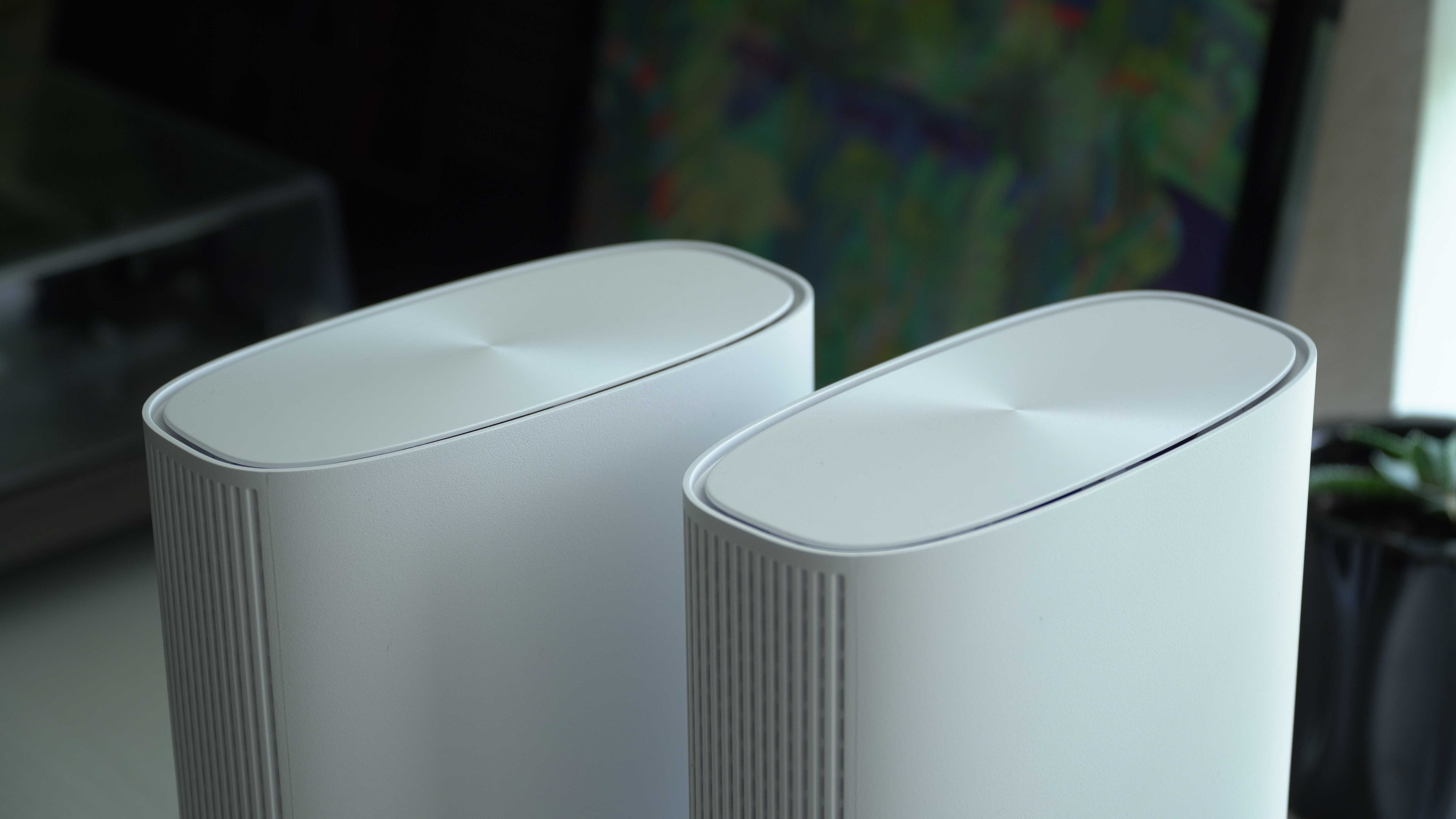
The ZenWiFi AX Hybrid XP4 is a mesh Wi-Fi kit with built-in power line backhaul capabilities. The vast majority of mesh Wi-Fi systems from high-end Netgear Orbi kits to cheap Eero meshes use Wi-Fi to connect the nodes to one another. In general, this is a great solution that all but eliminates the need for traditional Wi-Fi extenders. Even so, if you live in a place with a lot of wireless interference or just need to get your internet connection to the other side of a concrete wall, Wi-Fi is no good.
ASUS has included a power line adapter in each node so you can use your home’s electric wiring as a backhaul as opposed to running an Ethernet cable across your home. While the Ethernet option will be faster and more consistent, it can be a lot of trouble drilling holes and pulling cables up the walls. These nodes use the HomePlug AV2 MIMO Power Line Communication (PLC) standard. That works out to a maximum speed of AV1300 or 1,300Mbps in ideal conditions. The problem is that my home isn’t ideal for transmitting data over power lines and more than likely, neither is yours. I’ll explain this in more depth later in the review.
The problem is that my home isn’t ideal for transmitting data over power lines and more than likely, neither is yours.
Putting the complications of PLC aside, the rest of the XP4 is a fairly unremarkable AX1800 dual-band Wi-Fi 6 mesh kit. The nodes follow the design language ASUS has established for its ZenWiFi nodes with a matte white housing and its signature concentric circle design on the top. Ventilation is handled by some openings on the left, right, and back of the device with exhaust around the edges of the top.

On the back, the XP4 nodes each feature a WAN Ethernet port for incoming connections, two gigabit LAN ports, a USB 3.0 port, and of course the AC power connector. Unlike the vast majority of routers, the power supply is contained inside the node to facilitate the power line functionality.
While my kit came with U.S.-style plugs, the system itself can take an input of 100 to 240 volts at 50 or 60Hz, so with the right cable, you could use them just about anywhere. The included cables are thick with good strain relief. Outside of an accident, I don’t think these cables will be a significant point of failure. The cables use a C5 “Mickey Mouse” connector and I was able to get connected using another cable I had in storage.
At the end of the day, these nodes need a strong copper connection to the outlet and the included cables are more than sufficient. Just be sure not to plug them into a power strip or a UPS. These go straight into the wall.
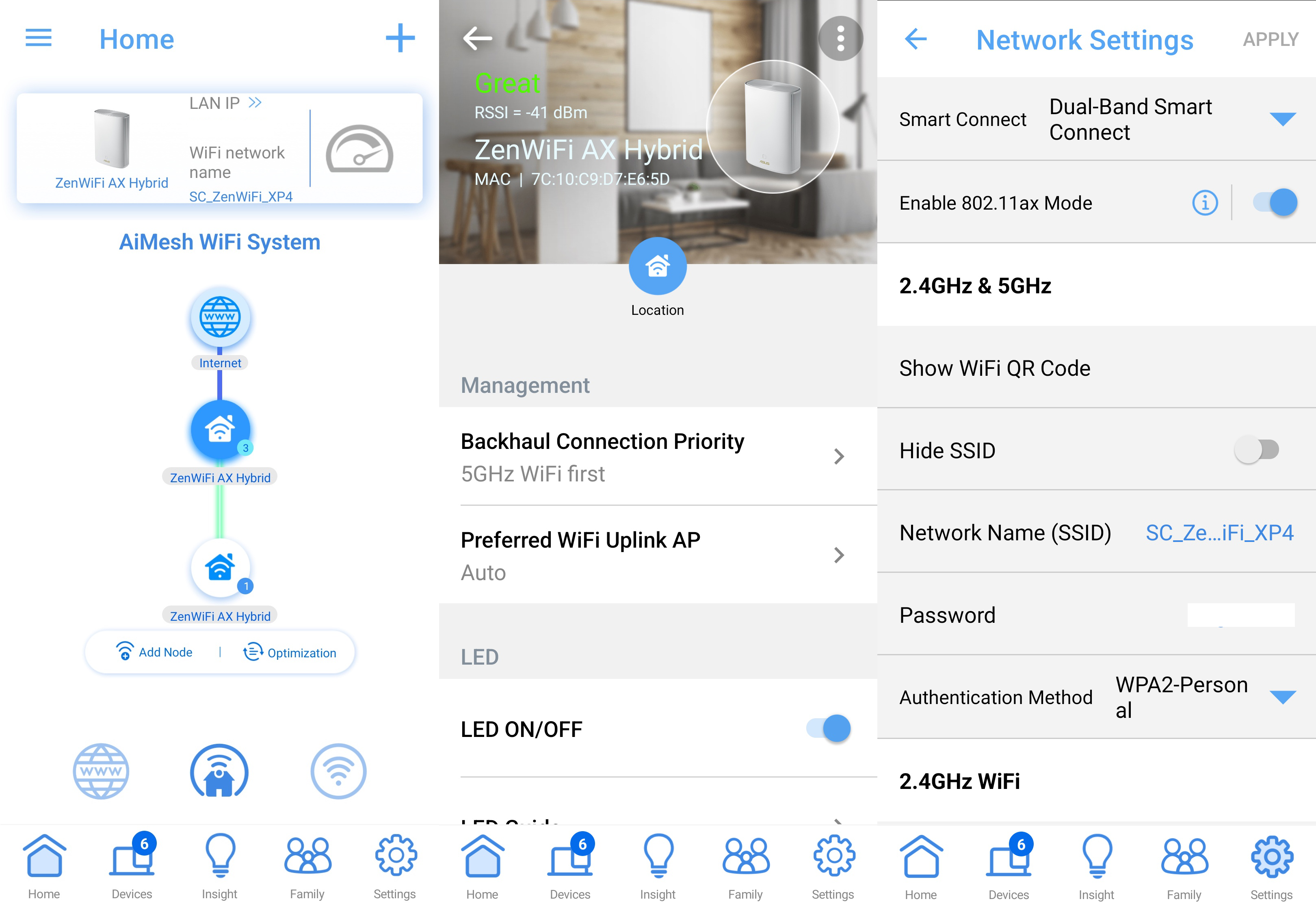
As with most ASUS routers, setup was quick and without issue when using the ASUS Router app on Android 12. One thing to keep in mind is that connecting your mesh nodes will take longer than other systems as the node will need to figure out which connection is strongest to get connected. To keep things simple, I recommend setting them up in the same room before moving the node to its final location.
Default settings for this system set the backhaul to auto, meaning that the software will determine whether Wi-Fi or power line has a stronger connection. The experience on auto simply isn’t as good as it should be. In the first location I tried, the node would switch between Wi-Fi and PLC seemingly at random and it wasn’t instant. My devices would get stuck buffering in these transitions which could take anywhere from a few seconds to a minute to come back online. For the majority of my testing, I set the preferred connection to powerline mode.
In the location for my speed tests, or rather, the final power outlet, ASUS’ software reports a backhaul connection of 611Mbps. This is quite good compared to some of the speeds some other reviewers and customers have been reporting but it took some trial and error to find these results. As always, I tested the ZenWiFi AX Hybrid XP4 on my gigabit Cox internet connection with up to 940Mbps download.
| Device | Living room (router) | TV room (node) | Bathroom |
| ASUS Zenfone 8 | 538Mbps 553Mbps | 231Mbps 254Mbps | 250Mbps 243Mbps |
| Galaxy S20+ | 523Mbps 436Mbps | 243Mbps 214Mbps | 240Mbps 248Mbps |
| LG G8 | 437Mbps 456Mbps | 237Mbps 245Mbps | 239Mbps 243Mbps |
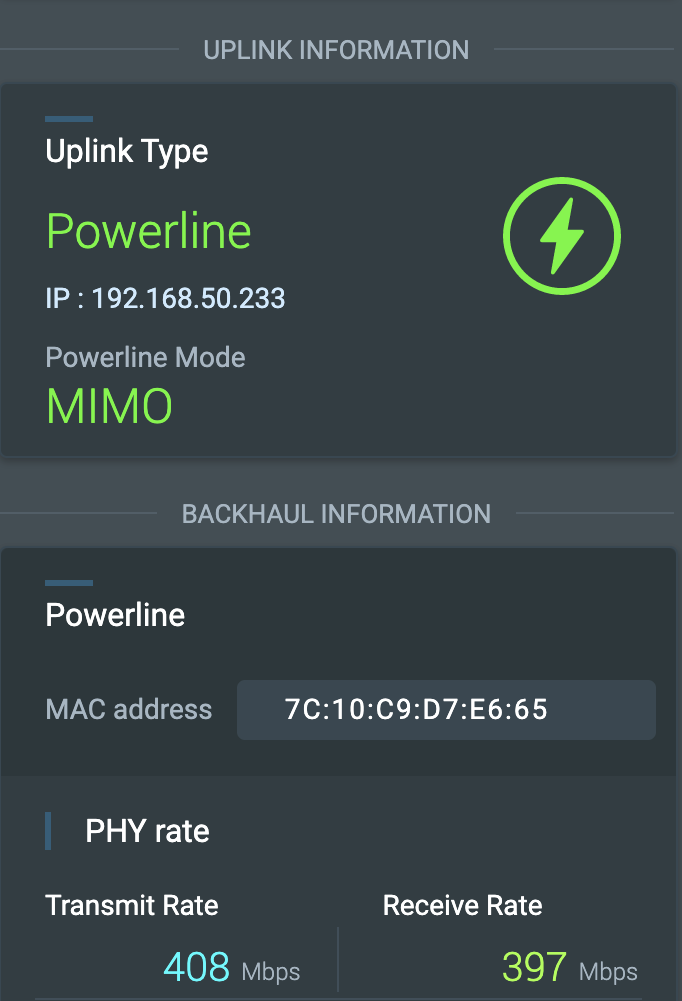
In general, the results in the first location were in line with what I would expect from an AX1800 system, if not a bit on the low side. Speeds connected to the node were reasonably solid and plenty for 4K streaming and web browsing.
Using an Ethernet directly connected to the node revealed very similar results so there’s no significant loss using the node’s Wi-Fi. Directly connected, I got 238Mbps down using the powerline backhaul. It’s worth noting as well that ping times did not suffer and I didn’t see any packet loss once I had set the preferred connection.
Switching to Wi-Fi, speeds were higher at 568Mbps. Of course, if you had a strong Wi-Fi connection to the node like I do, you could stick with a cheaper mesh system. The fact of the matter is, if you need it, the powerline backhaul works and delivers plenty of performance for most people.
| Type | Reported connection | Tested speeds |
| Powerline | 611Mbps | 238Mbps |
| Wi-Fi | 1080Mbps | 568Mbps |
ASUS keeps the same software design as its other routers with a good mobile app with just about any setting the average user could want available. For those looking for more advanced settings, you can still connect to the routers in a web browser. Unlike many other companies, ASUS does not dumb down its mesh system’s software. This is a breath of fresh air for those looking for a reliable and easy-to-use mesh kit with the option to get into the settings if you really want to.
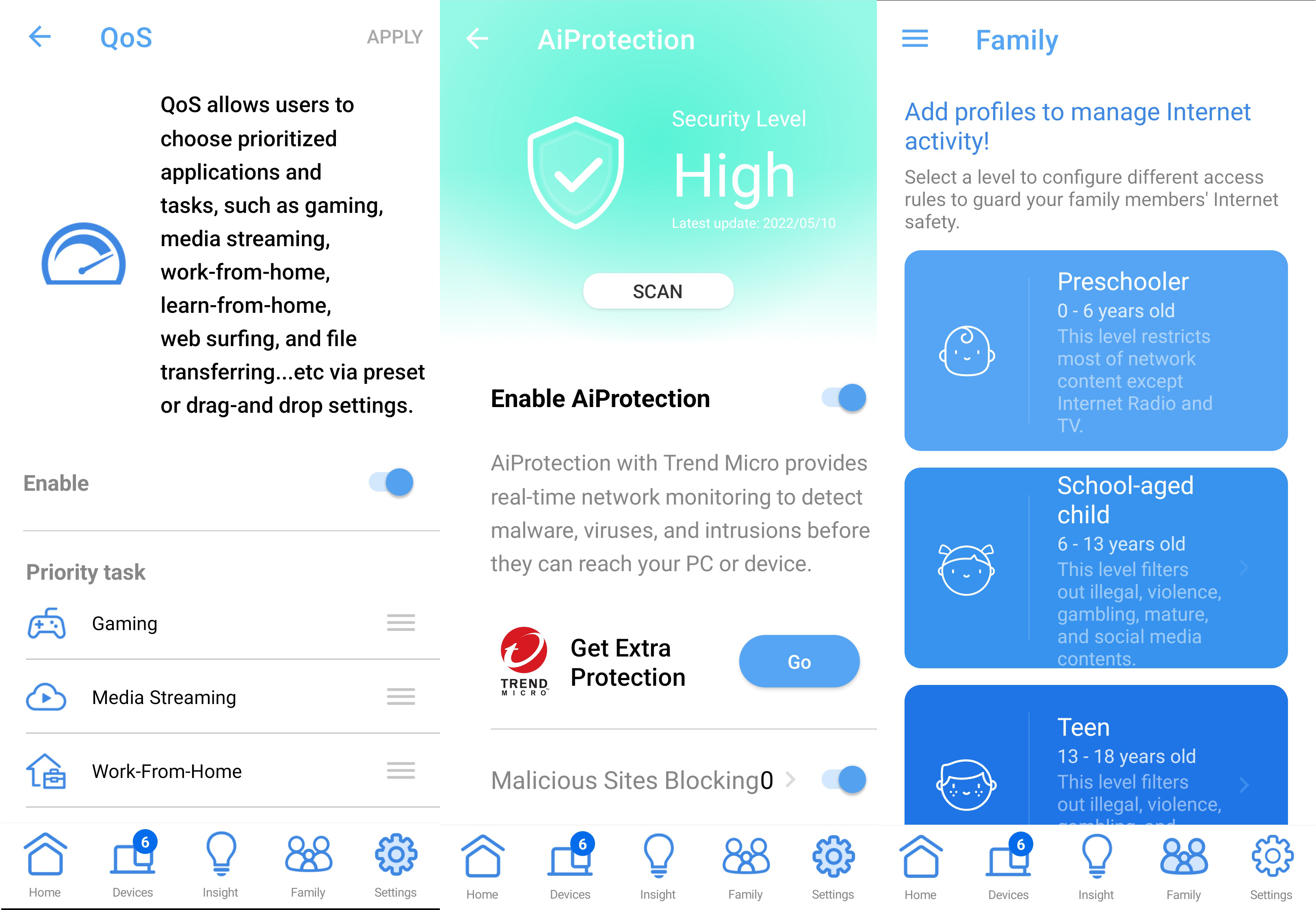
AiProtection Pro is included for free as well as ASUS’ Advanced Parental Controls. AiProtection allows for malicious site blocking and intrusion protection across the entire network so you don’t need to install any extra software to use it. The parental controls offer profiles for multiple age groups with customization so you can tailor online experiences for each member of the family without restricting any of the adults. With both TP-Link and Netgear requiring subscriptions for similar services, ASUS packs in an impressive amount of value.
ZenWiFi AX Hybrid review: What doesn't work so well

While I was able to find an outlet that gave me a good connection to the primary node, it wasn’t the first outlet I tried. After trying half a dozen outlets in my home, only one delivered a connection over 200Mbps with most of them sitting closer to 160Mbps. Streaming and browsing still work on these connections but with a few devices connected, I started to see a lot more buffering and my video streams started to get pixelated.
The fact of the matter is that many people will get better speeds using a mesh kit with a wireless backhaul even if they have to get a little more creative with positioning: Wall-mounting the router or just picking one with better coverage out of the box. You could also make smaller hops by implementing more nodes that can work around problematic walls rather than using brute force to get past them such as the excellent tri-band Nighthawk MK83 from Netgear.
The problem is not with the quality of the product or the capability of the underlying PLC tech, it was just a lot of trial and error in finding the best outlet for my connection. As a matter of fact, the outlet I ended up using was in the hallway with the power cable running around a corner into my TV room. It works but its unusual location also brought out another minor annoyance. The plugs themselves stick out quite far from the wall. I would have preferred a right-angle plug so I could run the cable along the wall more neatly rather than having it dangling over the cat’s food dish just begging him to take a swat.
The problem of course is interference on the power lines. You can have a poor connection as a result of poor quality wiring or simply appliances with AC motors — so, most appliances. It gets even worse if you need to pass through a fuse box. While the front of this kit's retail packaging suggests this kit is for homes with thick walls, if you’ve got an old house with plaster walls and knob and tube wiring, you’re likely to have a bad time.
ZenWiFi AX Hybrid review: Expanding an existing mesh

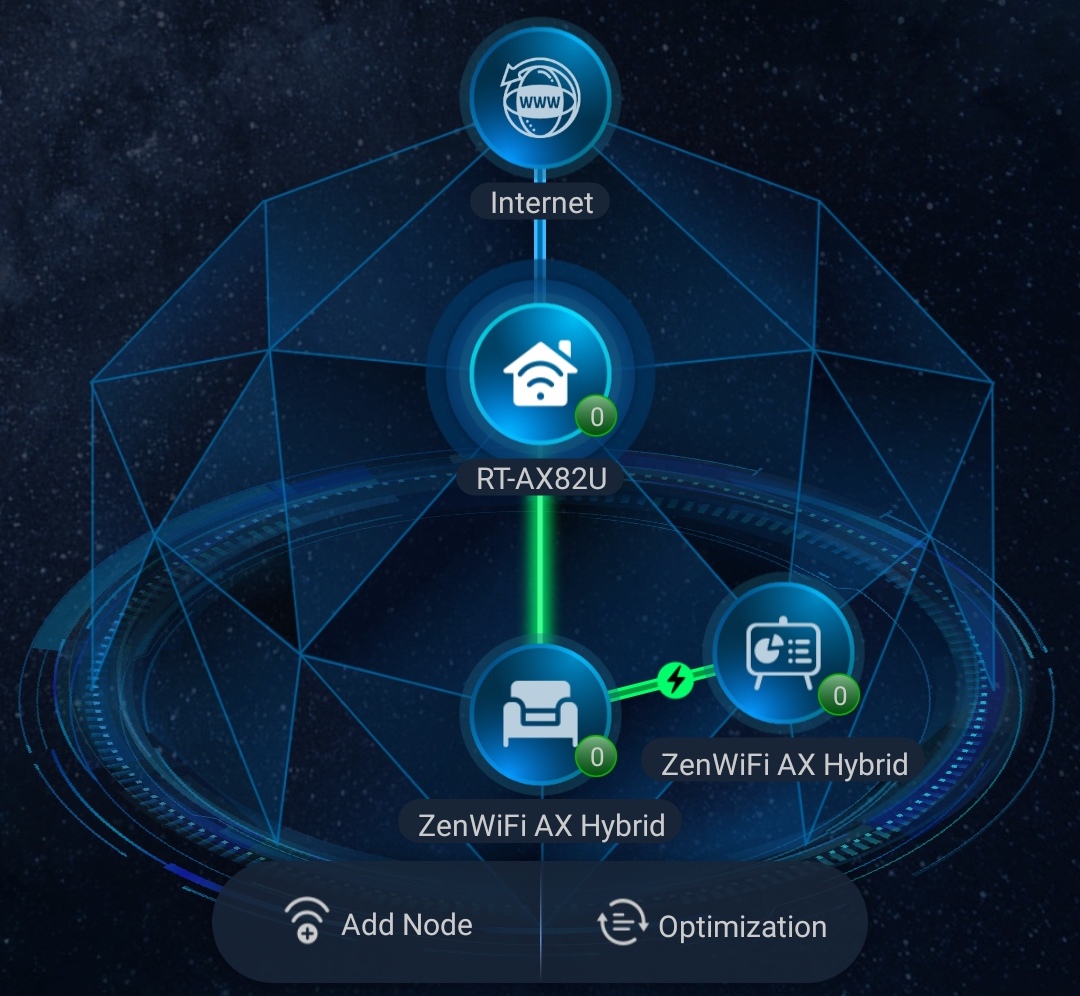
Before wrapping up, I wanted to try out another configuration that might make a bit more sense. If you’ve got something like a detached garage or enclosed patio on the far side of a concrete or brick wall, you could use the ZenWiFi AX Hybrid XP4 in tandem with another ASUS router thanks to AiMesh. I pulled the trusty ASUS RT-AX82U out of storage and added the two ZenWiFi nodes to its mesh. I then also set one XP4 node to connect via Wi-Fi with the second XP4 node connecting to the first via powerline.
If you have a detached garage, you could place the first node on the same circuit inside the house as the garage, allowing for good powerline speeds without compromising any speed inside the home. At the end of the day, I feel like this ZenWiFi AX Hybrid XP4 makes a lot more sense as a mesh expansion rather than a standalone system, and luckily for us, ASUS makes connecting the entire system a breeze.
ZenWiFi AX Hybrid review: Competition

If you stripped away the powerline connectivity from the ZenWiFi AX Hybrid XP4, you would be left with the ZenWifi XD4. These compact nodes have an AX1800 connection with all of the software features ASUS users have come to expect. If you find you don’t need the powerline features but like the rest of the kit, this is a great alternative mesh system. It also costs less than the XP4.
Eero is one of the first names to come up when you mention mesh networking and the eero 6 Wi-Fi 6 router is an excellent pick with an AX1800 connection. The eero 6’s compact nodes cover up to 4,500 sq. ft. with just three. Eero also maintains compatibility between all eeros so you can even mix and match systems for your needs. Eero’s setup and management app is a joy to use even if you need to set up an account ahead of time. If you’re looking for simple connectivity with solid speeds, eero 6 is a great place to start with faster eeros available if you need a little more performance.
The TP-Link Deco P9 is one of the only other powerline mesh systems with three nodes and an AC1200 dual-band Wi-Fi connection. This kit takes a speed hit compared to the ZenWiFi but with AV1000 speeds, it should still be good enough for browsing and streaming. With three nodes in the box, you can cover up to 6,000 sq. ft. with this kit. While the speeds won’t stand up, it is over $100 cheaper and will work just fine for many families.
ZenWiFi AX Hybrid review: Should you buy it?

You should buy it if...
- You need Wi-Fi on the other side of a thick wall.
- You have a lot of wireless interference.
- You’re willing to fine-tune your connection.
You shouldn't buy it if...
- You want a simple mesh solution.
- You need gigabit speeds.
- You have an older house with aging wiring.
The ZenWiFi AX Hybrid is a solid, well-built mesh kit and for many people, it delivers plenty of wireless speed with its AX1800 connection. The powerline backhaul option will work well enough in many homes for streaming and browsing, even if that home has thick walls that defeat Wi-Fi signals.
Even so, the fine-tuning needed to get this system running its best out of the box is more tedious and complex than many people are willing or able to undertake. Even so, many people will find that a modern Wi-Fi 6 connection as found in one of the best Wi-Fi 6 mesh systems will be more than adequate for their mesh needs and in some homes, may even turn out to be faster than the powerline backhaul.
If you have a home that demands a wired connection over wireless, the ZenWiFi AX Hybrid is worth considering. While performance in my case makes it hard to recommend, for those with a lot of wireless interference, this can be a solid upgrade with enough speed for everyday browsing and HD streaming on multiple devices.
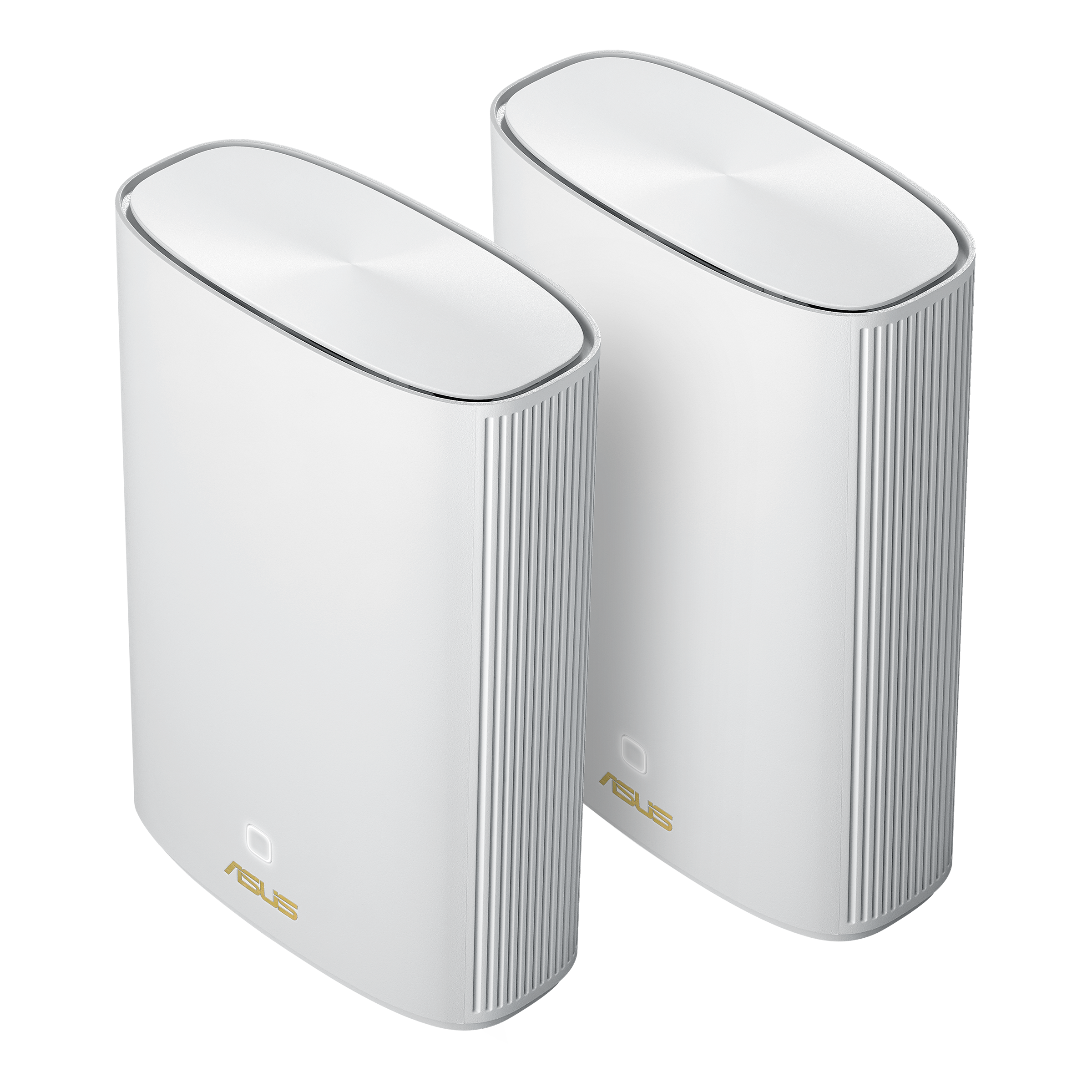
The ZenWiFi AX Hybrid is a solid and reliable mesh Wi-Fi system — but its powerline backhaul option won't be a good choice for many people, making it hard to recommend over other cheaper AX1800 mesh systems. Even so, if Wi-Fi and Ethernet aren't options to connect your mesh, this kit may be the solution you're looking for.
When Samuel is not writing about networking or 5G at Android Central, he spends most of his time researching computer components and obsessing over what CPU goes into the ultimate Windows 98 computer. It's the Pentium 3.
